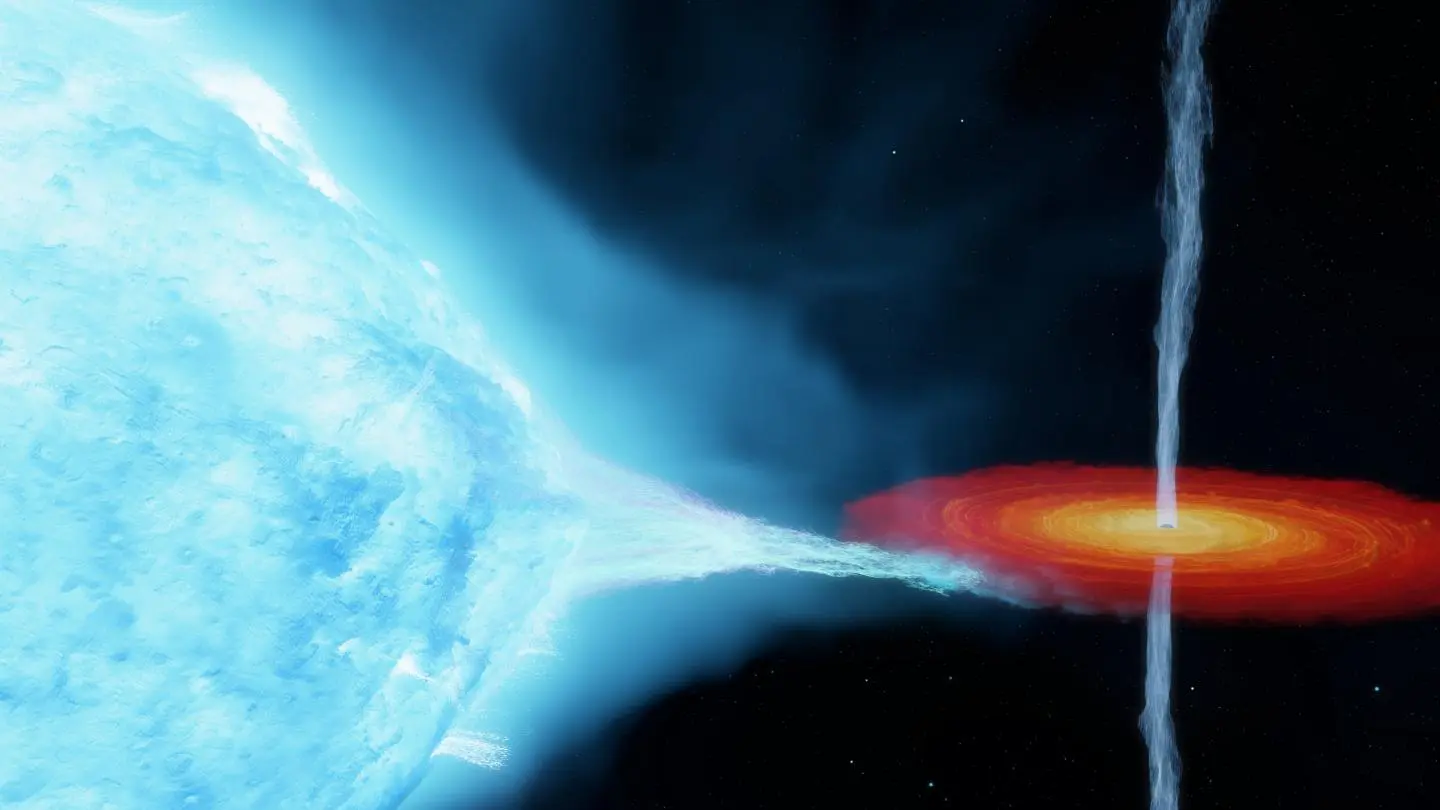India’s space telescope AstroSat has measured X-ray polarisation from the Cygnus X-1, opening new possibilities in the study of the black hole’s environment.
- It is one of the 1st confirmed black hole systems in our galaxy.
- Discovery – Over 4 decades ago.
- Location – About 400 times more than the distance between Earth and Sun.
- Size – It is 20 times heavier than the Sun.
- It has a companion, a heavy supergiant star (40 times more massive than the Sun) in a binary system.
- Generates soft X-rays – Due to its gravitational pull material from the supergiant falls and spirals-in towards the black hole that forms a thin accretion disk which is responsible for soft X-rays.
- Recent observation – Cygnus X-1 measured the high polarization in 100-380 keV range, implying that the radiation is likely to have originated at the black hole jet.
- Significance – While normal X-ray measurements only reveal the energy or intensity of the radiations, polarisation characteristics reveal the orientation of the oscillating electric field thereby the geometry and other properties of the black hole.
It is the 1st time hard X-ray radiation is connected to the black hole jet.
| Polarization |
|
Astrosat was launched by Indian Space Research Organisation (ISRO) in September 2015. It has 5 scientific instruments of which the Cadmium Zinc Telluride Imager (CZTI) measured the X-rays from the black hole.




